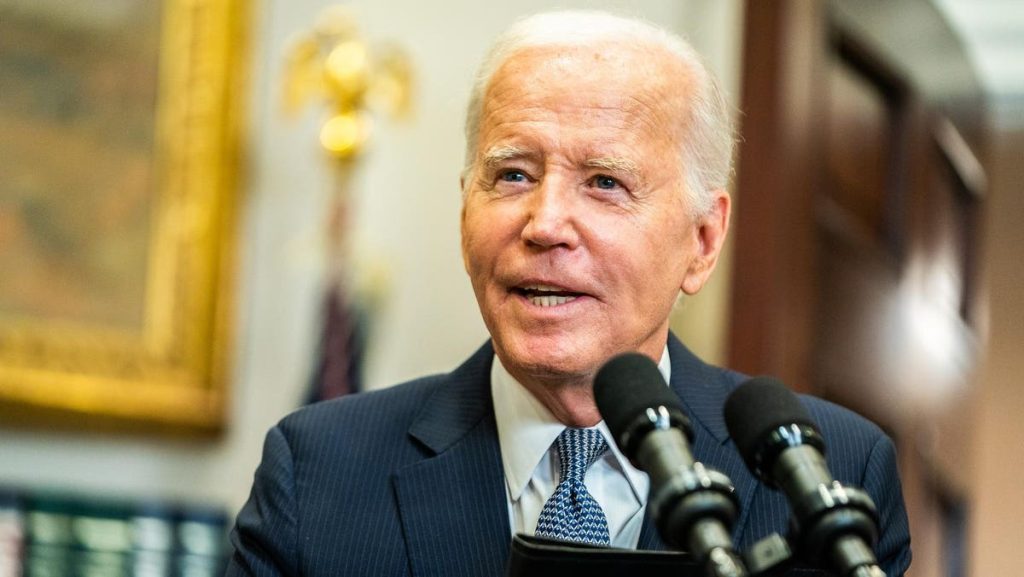This week, hundreds of thousands of borrowers are receiving student loan forgiveness as a result of a Biden administration initiative that adjusts qualifying payment counts.
“Beginning this week, 804,000 student loan borrowers started receiving $39 billion in automatic student loan discharges thanks to fixes to income-driven repayment (IDR) plans implemented by the Biden-Harris Administration,” said the Education Department in a statement on Tuesday.
But this is just the first group of borrowers approved for student debt relief under the adjustment initiative. Borrowers who don’t qualify now still have time to become eligible for loan forgiveness before the temporary program ends.
Student Loan Forgiveness Under Fixes To IDR And PSLF
This week’s student loan forgiveness is a result of the IDR Account Adjustment, a temporary Biden administration initiative first released last year. Biden established the program to address past failures in administering Income-Driven Repayment and Public Service Loan Forgiveness. These programs allow borrowers to receive student loan forgiveness after many years in repayment — 20 or 25 years for IDR plans, and as little as 10 years for PSLF (if borrowers were working in qualifying public service employment).
But because of longstanding problems, few borrowers actually received student loan forgiveness through either IDR or PSLF. The programs had complex eligibility criteria that were often poorly communicated by loan servicers and the government. In some cases, borrowers were steered into costly forbearances and deferments, rather than IDR or PSLF, costing borrowers in interest accrual and resulting in years of addition repayment. And even when borrowers did everything right, loan servicers and the government did not always track their progress toward loan forgiveness or properly count qualifying payments.
The IDR Account Adjustment was designed to fix these historical issues. The initiative authorizes the Education Department to credit borrowers with payments toward student loan forgiveness that may not have counted previously. This includes past loan repayment periods under any repayment plan (it does not have to be IDR specifically), as well as some deferment and forbearance periods.
Borrowers who reach the 20- or 25-year threshold for IDR student loan forgiveness after receiving the adjusted credit can have their loans completely discharged. Other borrowers will fall short of the threshold for loan forgiveness but will nevertheless advance their progress, shortening their remaining time in repayment. And borrowers can also receive PSLF credit as far back as October 1, 2007 for periods during which they were working in qualifying nonprofit or government jobs.
First Group Of Borrowers To Reach Student Loan Forgiveness Milestone
The 804,000 borrowers receiving student loan forgiveness this week represent the first group of borrowers to reach the 20- or 25-year IDR threshold for loan forgiveness under the adjustment. These borrowers were notified last month that they qualify, and discharges are now being implemented.
But borrowers on track for PSLF have already been receiving student loan forgiveness under the adjustment for several months. And more borrowers may qualify for relief under the initiative in the coming months, as well, before the program ends.
“ED will continue to identify and notify borrowers who reach the necessary forgiveness threshold,” says the Education Department in updated guidance. “We will send these notifications out every two months until next year, at which point all borrowers who are not yet eligible for forgiveness will have their payment counts updated.”
How To Qualify For Student Loan Forgiveness Under The IDR Account Adjustment
Borrowers who already have Direct federal student loans can qualify automatically for the IDR Account Adjustment. No action is necessary. Borrowers who don’t receive enough credit to qualify for immediate student loan forgiveness should have their IDR payment counts updated sometime in 2024, even if they are not currently enrolled in an IDR plan. However, borrowers who are short of the threshold for loan forgiveness would need to continue repaying their student loans under an IDR plan — such as Biden’s new SAVE plan — in order to continue progressing toward eventual loan forgiveness.
Borrowers who have non-Direct federal student loans, such as commercial FFEL loans, do need to take steps to qualify for the adjustment. These borrowers must consolidate their loans via the federal Direct consolidation program. In addition, some borrowers who have Direct loans with significantly different loan repayment histories may also want to consider Direct loan consolidation. The good news is that there is still time to consolidate.
“The adjustment will be applied to most borrowers’ accounts in 2024. It will be applied only to Direct and FFEL Program loans held by ED. If you have commercially held FFEL or any Perkins or HEAL loans, you will need to consolidate them before the end of 2023 to benefit from the account adjustment,” says Education Department guidance. “If you are a PSLF borrower who receives the adjustment in Fall 2023 (or you received an adjustment under the limited PSLF wavier) and you then consolidate later in 2023, your new consolidation loan will receive the account adjustment as long as you apply for the new consolidation loan on or before Dec. 31, 2023.”
Borrowers seeking student loan forgiveness through the PSLF program must take the additional step of certifying their public service employment in order to receive PSLF credit. This can be done online via the Education Department’s PSLF portal.
Further Student Loan Forgiveness Reading
Student Loan Forgiveness Update: What The Latest Court Victory Means For Borrowers
Student Loan Forgiveness Just Got Easier For These Borrowers
5 Student Loan Forgiveness Updates As Payments Resume In A Matter Of Weeks
Critical Student Loan Repayment And Forgiveness Deadlines Loom In August — And Beyond
Read the full article here




